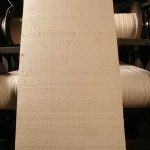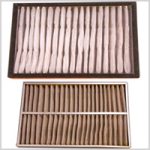Selecting Bag Media Based on Operating Temperature Ranges
Choosing the right bag media starts with understanding your operating temperature. A mismatch between dust collector bag material and temperature range leads to premature failure, increased emissions, and downtime. That’s why temperature-specific media selection remains one of the most critical factors for long-term filtration performance.
Whether you operate in cement, foundry, or food processing, you need materials that withstand thermal stress and airborne contaminants. Trusted dust collector bags suppliers provide options tailored for a wide spectrum, ranging from ambient temperatures to high-heat zones touching 260 °C.
Various Temperature Categories in Industrial Filtration
Temperature directly affects media stability, dust retention, and mechanical strength. Industrial applications usually fall into three operating brackets:
- Ambient (<100 °C): Suitable for general dust and non-corrosive gases.
- Moderate (100–200 °C): Found in boilers, textile mills, and plastic plants.
- High (200–260 °C): Common in incineration, foundries, and asphalt mixing units.
Each temperature range demands media engineered for precise thermal resistance and chemical tolerance.
Ideal Dust Collector Bag Media for Temperatures Below 150 °C
Applications operating under 150 °C benefit from standard but effective filtration fabrics. These are best for dry dust, minimal chemical exposure, and moderate air velocity.
Recommended media include:
- Polyester: Durable and cost-effective; ideal for wood and grain processing.
- Acrylic: Resists hydrolysis; good for moist environments.
- Polypropylene: Suitable for chemical plants and low-heat processes.
These media offer high filtration efficiency and reliable service life in ambient to moderately warm conditions. Leading dust collector bags suppliers recommend them for small-to-mid-scale units.
Performance Materials for High-Temperature Applications
Operations touching 200 °C or more demand premium media with advanced heat resistance. These materials prevent degradation and maintain performance even under thermal shock.
Key high-temperature fabrics:
- Aramid (Nomex): Withstands up to 204 °C; widely used in cement kilns.
- PPS (Ryton): Stable in chemical-heavy and moist heat environments.
- P84: Offers high filtration efficiency and excellent acid resistance.
- PTFE (Teflon): Ideal for highly corrosive and extreme-temperature zones.
Factors to Consider Before Choosing the Right Media For Dust Collector Bags
Media selection goes beyond just temperature. Consider these aspects before placing your order:
- Dust characteristics: Sticky, abrasive, or corrosive nature.
- Cleaning method: Pulse jet, shaker, or reverse air.
- Process fluctuations: Are there temperature spikes or batch operations?
- Emission norms: Local compliance requirements.
- Maintenance frequency: Ease of removal and reinstallation.
Top dust collector bags suppliers offer technical assessments to help industries align media with operating variables.
Customisation and Maintenance for Indian Industry Conditions
Indian industries deal with unique challenges like power fluctuations, dust density, and monsoonal humidity. Custom fabrication ensures filters perform efficiently across seasons and locations. The most important features worth considering are:
- Stitch type and reinforcement
- Special coatings for anti-static or oil-repellent finishes
- Fitment type compatible with local housings
Selecting bag media suited to your plant’s temperature profile boosts efficiency and reduces filter changeovers. If you’re looking for dust collector bags suppliers that understand your industrial needs, consider working with a partner that delivers precision, durability, and customisation.
SAF Filters offers temperature-specific dust collector bags with engineered filtration media, free technical consultation, and reliable supply capabilities. Explore SAF Filters’ solutions to stay compliant, cost-efficient, and ahead in your filtration strategy.




